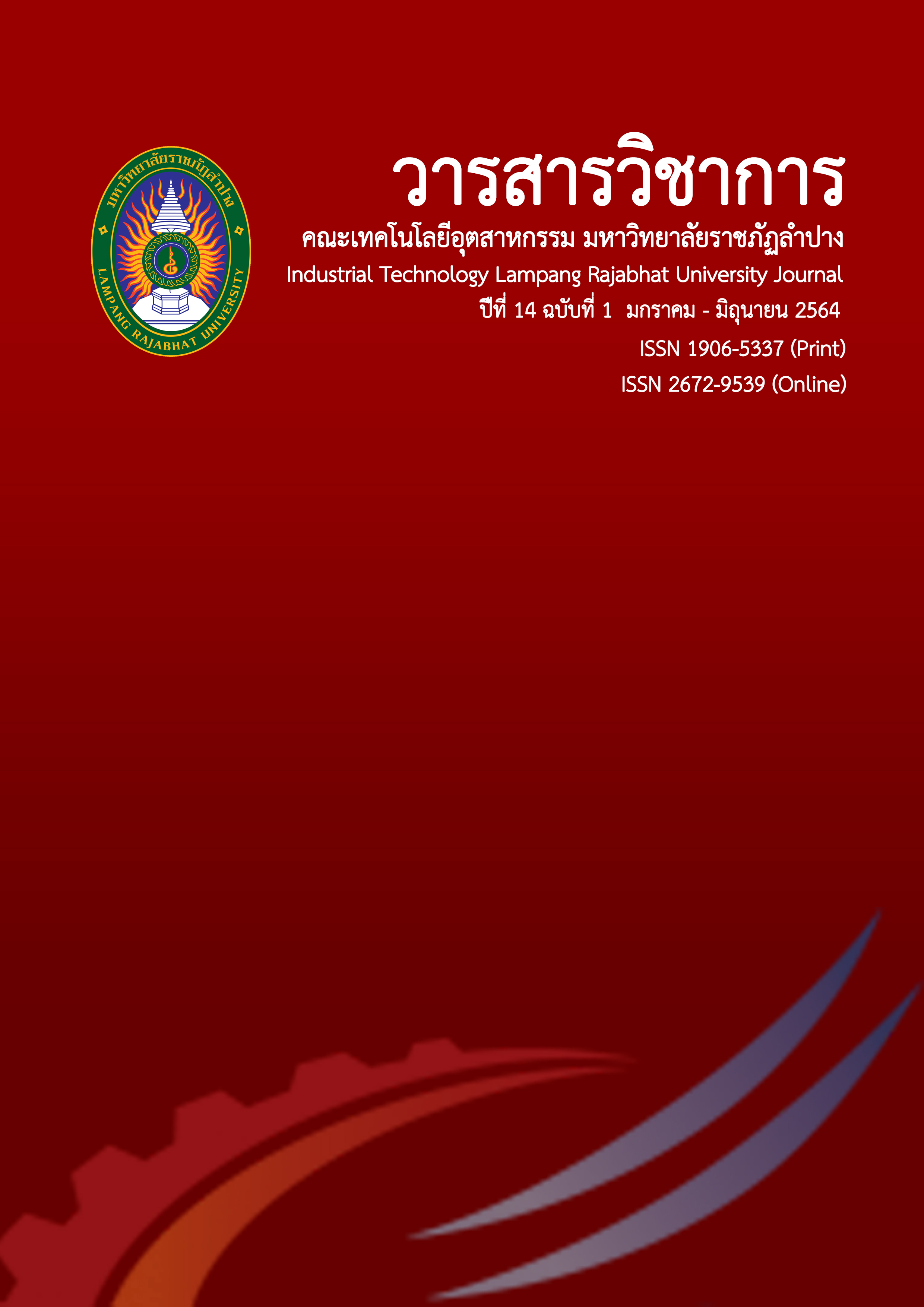Work Improvement in Herbal Medicine Process using by Work Method and Time Study
Keywords:
Work Method, Time Study, Work Improvement, Herbal MedicineAbstract
The purpose of this research was study the improvement of working methods in the production of the Herbal Medicine Process and to compare the working efficiency before and after with standard time. In order to analyze number of process, we can be separated work in flow process chart were 26 processes (before improvement) and identify problem with the 6W-1H technique in 5 processes. Therefore, we presented the guidelines for using ECRS principles in the work process as follows: 1) It was found that unnecessary movements in the fifth and twenty-six processes proposed eliminating work, 2) Work delay in process ten used to make work easier by equipment and 3) In the fourteenth and seventeenth processes, workstations are not related to work, so removed the workstations to simplify work in work process.
The research result was highlighted that, the number of after improvement in the flow process chart were 25 processes (after improvement) and time considered as follows: the selected time before improvement of 2,492.10 minutes compared with after improvement of 2,469.83 minutes to decrease 0.89%, the normal time before improvement of 2,855.47 minutes compared with after improvement of 2,814.91 minutes to decrease 1.42% and the standard time before improvement of 3,027.70 minutes compared with after improvement of 2,982.36 minutes to decrease 1.50%
References
Bambang S., Nur A., and Pringgo W. L. (2019).Minimizing Waste using Lean Manufacturing and ECRS Principle in Indonesian Furniture Industry, Cogent Engineering [Online], 6(1). Available: https://www. tandfonline.com/loi/oaen20.
Gangopadhyay S., Ghosh T., Das T., Ghoshal G. and Das B. (2006). Work Organization in Sand Core Manufacturing for Health and Productivity, International Journal of Industrial Ergonomics, 36(10): pp. 915 – 920.
Herbs Thailand, (2011), Medicinal plants. Retrieved September 1, from https://sites.google.com/site/smunphirthiythailand/
Kato, I. and Smalley (2011). A. Toyota Kaizen Methods Six Steps to Improvement, NY: Productivity Press. New York.
Lu Xin. (2018). Multi-project Management Model based on ECRS Method, International Conference on Educational Research, Economics, Management and Social Sciences (EREMS 2018), pp. 53-55.
Mongkol K., Napatsorn P. and Tanawat P. (2019). Application of Industrial Engineering Techniques to Improve Production Efficiency: A Case Study of Mushroom Grain Spawn Process, Kasem Bundit Engineering Journal Vol.9 No.2, May-August, pp. 7181. (in Thai)
S. Anil Kumar and N. Suresh, (2008). Production and Operations Management 2nd Edition, New Age International (P) Ltd., Publishers, New Delhi.
Teerawat Kaewpia, Supaporn Kamteja and Jutamas Korkerd. (2020). Improving the Crispy Barley Flour Rolls Vegan Production Process by Work Study Techniques, paper presented Conference on Logistics and Supply Chain 2020, College of Logistics and Supply Chain, Suansunandha Rajabhat University, Nakhon Pathom. pp. 1121-1130. (in Thai)
Wanchai Richirawanit. (2002). Work Study Principles and Case studies. Bangkok: Chulalongkorn University Press. (in Thai)
Watcharin Sitticharoen. (2004). Work Study. Bangkok: National Innovation Agency. (in Thai)
Downloads
Published
Issue
Section
License
Copyright (c) 2021 Industry Technology Lampang Rajabhat University

This work is licensed under a Creative Commons Attribution-NonCommercial-NoDerivatives 4.0 International License.






